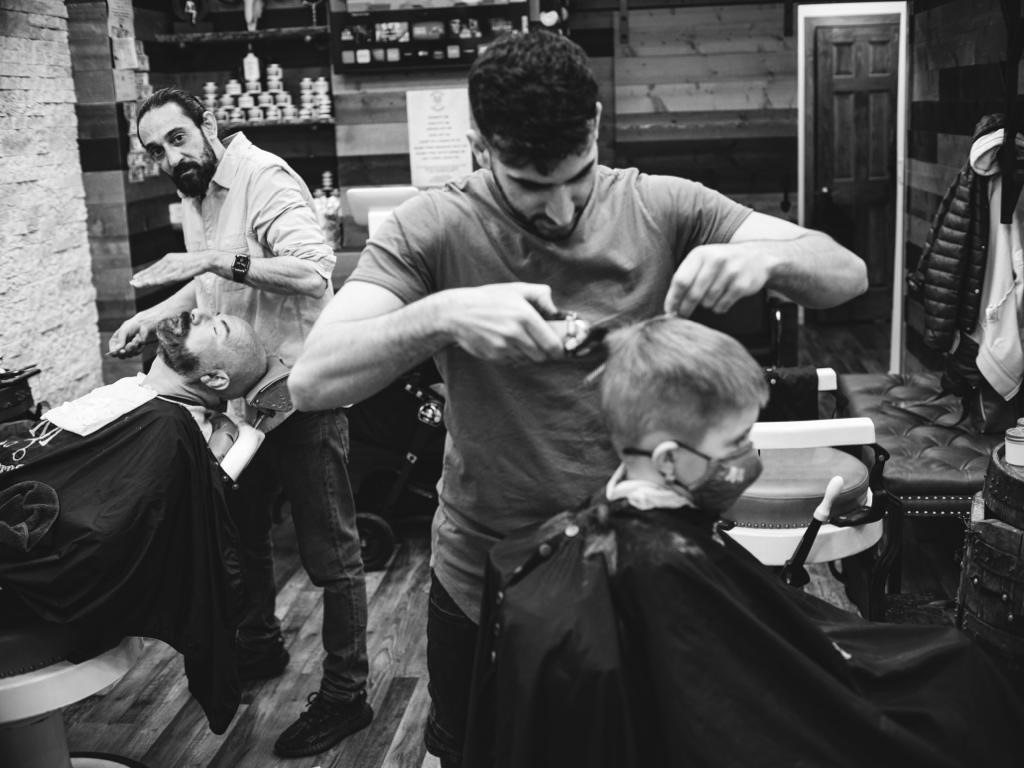Frequently Asked Questions
A taper haircut and a low fade differ significantly in terms of maintenance and upkeep, especially in a professional setting. A taper haircut, characterized by its gradual transition from longer hair on top to shorter hair on the sides and back, requires regular trims to maintain its clean and polished appearance, as the hair grows out more evenly. This style is often seen as more conservative and versatile, making it suitable for various professional environments. On the other hand, a low fade, which features a more dramatic and abrupt transition from longer to shorter hair starting lower on the head, demands more frequent visits to the barber to preserve its sharp, defined lines and prevent the fade from losing its distinctiveness. The low fade's edgier look can be perceived as less traditional, potentially requiring more careful consideration of workplace dress codes. Both styles necessitate the use of styling products like pomade or gel to maintain their shape and texture, but the low fade may require additional attention to detail to ensure the fade remains crisp and well-defined.
In a corporate environment, the key differences in styling options between a taper and a low fade revolve around subtlety and formality. A taper haircut gradually shortens the hair from the top down to the natural hairline, maintaining a conservative and polished appearance suitable for professional settings. It offers a seamless transition that blends well with various hair textures, making it versatile for different corporate dress codes. On the other hand, a low fade haircut features a more pronounced contrast, with the hair fading sharply from the top to the skin just above the ears. This style can be perceived as more modern and edgy, potentially drawing more attention, which may not align with traditional corporate norms. The low fade's distinct demarcation line can be styled with precision, offering a sleek look that complements contemporary business attire. Both styles can be tailored with side parts or comb-overs to enhance their professional appeal, but the taper generally aligns more closely with conservative corporate aesthetics, while the low fade offers a bolder, trendier option.
The taper haircut is generally more versatile for transitioning between business and casual settings. This style features a gradual reduction in hair length from the top of the head down to the neckline, offering a clean and polished appearance that suits professional environments. The taper can be easily adjusted to accommodate various hair textures and lengths, making it adaptable for different personal styles. Its subtlety allows for a seamless blend with the rest of the hair, maintaining a conservative look that is often preferred in corporate settings. Additionally, the taper's understated elegance can be effortlessly styled for more relaxed, casual occasions, providing a balanced aesthetic that bridges the gap between formal and informal. In contrast, a low fade, while stylish and modern, often presents a more dramatic contrast between the longer hair on top and the closely shaved sides, which may not always align with traditional business standards.
Facial features and head shape significantly influence the choice between a taper and a low fade for an executive look, as these hairstyles can accentuate or balance different aspects of one's appearance. A taper, which gradually shortens the hair from the top down to the neckline, is often suited for individuals with oval or elongated face shapes, as it maintains a more conservative and polished appearance, ideal for corporate environments. It can soften angular jawlines and add subtle volume to the crown, enhancing symmetry. Conversely, a low fade, which starts the fade closer to the ears and gradually blends into the longer hair on top, is ideal for those with round or square face shapes, as it can create the illusion of a longer face and add definition to softer features. The low fade's clean, sharp lines can highlight cheekbones and jawlines, providing a modern yet professional aesthetic. Both styles require consideration of hair texture, density, and personal style to ensure the final look complements the individual's overall appearance while maintaining an executive demeanor.
In professional industries, taper haircuts are often perceived as classic and conservative, aligning with traditional corporate environments that value understated elegance and timeless style. The taper, characterized by its gradual transition from longer hair on top to shorter hair on the sides and back, is associated with professionalism, reliability, and a polished appearance. On the other hand, low fade haircuts, which feature a more dramatic contrast between the longer hair on top and the closely shaved sides, are seen as modern and edgy, appealing to creative industries that embrace innovation and individuality. The low fade's sharp lines and contemporary aesthetic can convey confidence and a forward-thinking attitude, making it popular among younger professionals in tech startups and media companies. Both styles, however, must be well-maintained to ensure they project a neat and professional image, as grooming standards remain a critical aspect of workplace culture across various sectors.

